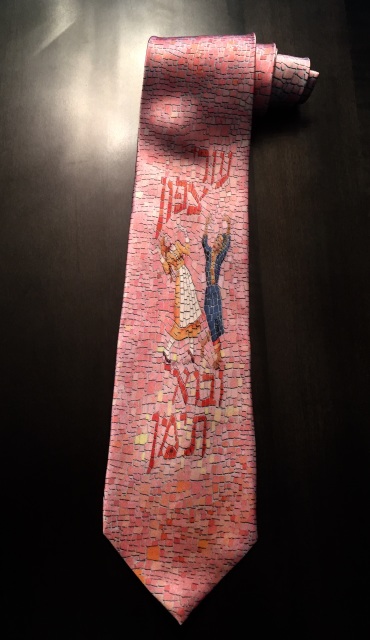- Ties (Neckwear)
- >
- Awake O' North and Come Yemen Silk Tie
SKU:
Awake O' North and Come Yemen Silk Tie
$36.00
$25.00
$25.00
On Sale
Unavailable
per item
"Awake, O north wind, Come, O south wind! blow upon my garden that its perfume may spread. Let my beloved come to his garden and enjoy its luscious fruits!" (Song of Songs 4:16)
The south (Yemen) will help pollinate the garden (land of Israel). The blend of north and south is evident today in the land of Israel with the immigration of Yemenite Jewry. The illustration comes to show the blend of the Sephardi and Ashkenazi cultures. The Hebrew words suggest a messianic era.
Yemenite Jewry has a strong rooted history in the southern part of Arabia. Perhaps traders reached this remote area as early as the time of King Solomon. Historical sources establish their appearance in Yemen just before the destruction of the first temple by the Babylonians. Due to the natural geographic isolation of the area, the Yemenite Jewish community has been able to strictly adhere to their traditions, religion and customs over the centuries. Never the less this community has maintained contact with other Jewish centers such as those in Babylonia, and the Land of Israel. The largest Jewish community was in San'a, the capital, but most Jews lived in villages dispersed throughout the country. The Jews living in villages usually enjoyed better relations with their Moslem neighbors than did city Jews. The Jews differed from their neighbors in their outward appearance. In villages, the difference was in small details, in cities in their general appearance. Jewish men had side-locks, and wore a modest head covering. Jewish women in San'a wore characteristic attire, which was very different from that of the Moslem women. During the spread of Islam, in Southern Arabia , Jews became Dhimmi, a protected religious minority. Unfortunately they were imposed with various prohibitions and laws, some of them humiliating. Never the less, they maintained their religion and a certain level of internal independence. They took measures not to be conspicuous with luxurious clothing and houses, but maintained an appearance of modesty. Most Jews were craftsmen, occupations not practiced by the Moslems, thus providing a necessary element to the country's economy. They especially excelled at silver working and in embroidery, in which they attained impressive achievements. Many Jews also practiced weaving, pottery, basketry, glaziers and construction work.



